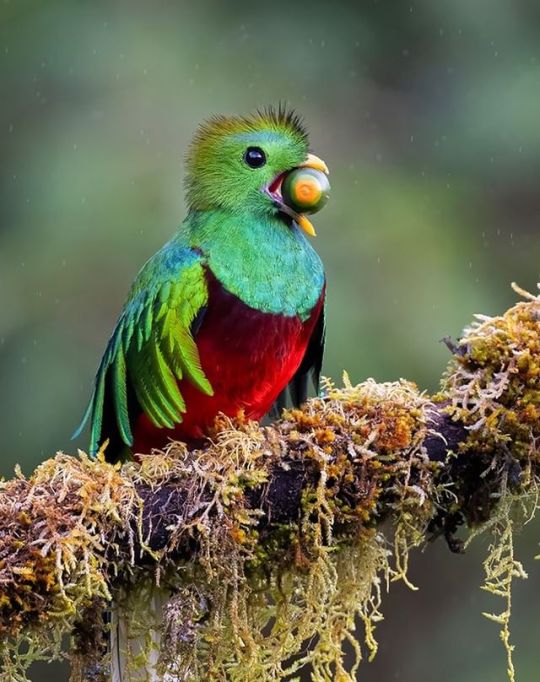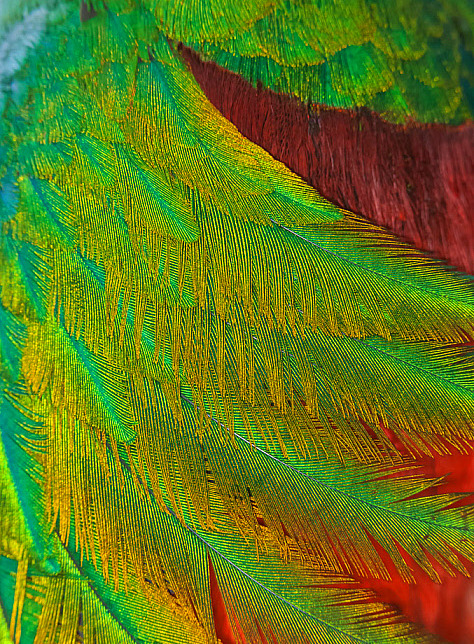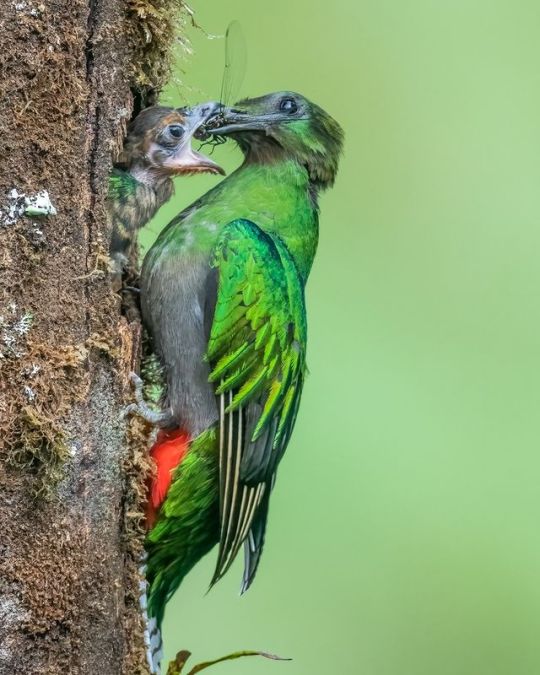#pharomachrus mocinno
Explore tagged Tumblr posts
Photo


Resplendent Quetzal
485 notes
·
View notes
Text

Resplendent Quetzal (Pharomachrus mocinno)
© Deborah Bifulco
23 notes
·
View notes
Text

Resplendent quetzal (Pharomachrus mocinno) close up of feathers
Photo by Claudio Contreras
#Pharomachrus mocinno#Pharomachrus#quetzal#resplendent quetzal#feathers#colorful feathers#birds#colorful birds#green#iridescent feathers#green birds#animals#wildlife#nature
38 notes
·
View notes
Photo

Rarest Animals In The World That Are On The Brink Of Extinction
Resplendent Quetzal (Pharomachrus Mocinno)
Wikimedia Commons
#near threatened#wikimedia commons#photographer#extinction#resplendent quetzal#bird photography#animal#pharomachrus mocinno#nature
30 notes
·
View notes
Text
Resplendent Quetzal (Pharomachrus mocinno)

"Very green. Very long. Swallows avocados whole. What’s not to love?" "Terrified to submit in case someone else already has but this is one of my favorite birds ever. I became obsessed with them in elementary when I learned that they could not be kept in captivity. There’s just something beautiful about a bird that loves freedom so much it will starve itself if put in a cage"
The wikipedia page for this species is absolutely packed to the brim with interesting facts. If you're interested in trogon or quetzal at all, I'd totally recommend taking the time to deep dive and read the whole thing. Holy crap there's a lot.
Quetzal court in the air while making specific calls to each other. They nest in cavities, with males incubating during the day and females taking the night shift. Their long tail coverts typically end up poking back out of the nest entrance. The males typically take better care of their chicks by bringing more food, and staying until the end of the rearing period, while females will abandon a nest to return to solitary life in the forest.
These birds hold high status in Guatemalan culture and are often associated with the myths of Quetzalcoatl. Their tail feathers were a symbol of sprouting plants in spring, and they were regarded as a figure of freedom and wealth, as they did not thrive in captivity, and their feathers could be used almost as currency. In Maya and Aztec culture, killing a quetzal was forbidden, so the birds were captured and their tail feathers trimmed before they'd be set free again.
Sources:
Image source: eBird ( Andrew Spencer)
#in memoriam (joke)#Pharomachrus mocinno#resplendent quetzal#trogonidae#north american birds#central american birds#yall they are even more wild than I knew#just an incredible bird honestly
25 notes
·
View notes
Video
Quetzal Resplandeciente - Resplendent Quetzal - (Pharomachrus mocinno) by Raúl Vega Via Flickr: Copey de Dota, Costa Rica
#Quetzal#Quetzal macho#Aves de Costa Rica#Raúl Vega#Quetzal Resplandeciente#Resplendent Quetzal#Pharomachrus mocinno#flickr
4 notes
·
View notes
Text
QUETZAL
PHAROMACHRUS MOCINNO NOMBRE CIENTÍFICO: PHAROMACHRUS MOCINNO. LONGITUD: 35 A 40 CM. PESO: 200 A 225 GRAMOS. PLUMAJE: DIFERENTE ENTRE LOS SEXOS. MIGRACIÓN: NO MIGRATORIO. ESTADO: VULNERABLE. UBICACIÓN: AMÉRICA CENTRAL. EL RESPLANDECIENTE QUETZAL MACHO ESTÁ AMPLIAMENTE CONSIDERADO COMO EL AVE MÁS HERMOSA DEL MUNDO. POSEE UN PLUMAJE BRILLANTE Y COLOREADO, PRINCIPALMENTE DE COLOR VERDE ESMERALDA…

View On WordPress
0 notes
Text

Resplendent Quetzal (Pharomachrus mocinno), male calling and displaying, family Trogonidae, order Trogoniformes, Costa Rica
photograph by Karsyn Sterns
#quetzal#trogon#pharomachrus#trogonidae#trogoniformes#bird#ornithology#animals#nature#central america
3K notes
·
View notes
Text

Inktober 2024 - Day 3 ✨
Resplendent Quetzal (Pharomachrus mocinno)
#art#artists on tumblr#my art#artwork#sketch#sketchbook#traditional art#traditional illustration#traditional drawing#traditional sketch#inktober#birds of tumblr#bird art#bird drawing#bird#birds#birbs of tumblr#birb art#cute birbs#birblr
258 notes
·
View notes
Text
Word List: Animals

for your next poem/story
Aardwolf - a maned striped nocturnal mammal (Proteles cristatus) of southern and eastern Africa that resembles the related hyenas and feeds chiefly on insects and especially termites
Bittern - any of various small or medium-sized, short-necked, usually secretive herons
Chevrotain - (also called mouse deer) any of several very small hornless deerlike ruminant mammals of tropical Asia, the Malay archipelago, and West Africa superficially resembling the musk deer, the male having short tusks, and being among the smallest known ruminants, standing only about a foot high
Douroucouli - (also called owl monkey) any of several small nocturnal monkeys (genus Aotus) of Central and South American tropical forests that have round heads, large eyes, and densely furred bodies
Eland - either of two large African antelopes (Taurotragus oryx and Taurotragus derbianus) bovine in form with short spirally twisted horns in both sexes
Falconet - any of several very small falcons
Gemsbok - a large and strikingly marked oryx (Oryx gazella) formerly abundant in southern Africa
Hoatzin - a crested large South American bird (Opisthocomos hoazin) with blue facial skin, red eyes, brown plumage marked with white above, and claws on the first and second digits of the wing when young
Ichneumon - a mongoose (Herpestes ichneumon) of Africa, southern Europe, and southwestern Asia
Jacana - any of a family (Jacanidae) of long-legged and long-toed tropical wading birds that frequent coastal freshwater marshes and ponds
Klipspringer - a small antelope (Oreotragus oreotragus) that is somewhat like the chamois in habits and is found from Cape Colony to Somaliland
Lammergeier - a large Old World vulture (Gypaetus barbatus) that occurs in mountainous regions, has long black bristles at the base of the bill, and in flight resembles a very large falcon; bearded vulture
Muntjac - any of a genus (Muntiacus) of small deer of southeastern Asia with an alarm call similar to the bark of a dog and having in the male elongated, downward-pointing upper canine teeth which protrude from the lip and short, usually unbranched, pointed antlers; barking deer
Nightjar - any of a family (Caprimulgidae) of medium-sized long-winged crepuscular or nocturnal birds (such as the whip-poor-wills and nighthawks) having a short bill, short legs, and soft mottled plumage and feeding on insects which they catch on the wing
Ouzel - blackbird
Palfrey - archaic: a saddle horse other than a warhorse; especially: a lady's light easy-gaited horse
Quetzal - a Central American trogon (Pharomachrus mocinno) that has brilliant green plumage above, a red breast, and in the male long upper tail coverts
Rosella - an Australian parakeet (Platycercus eximius) often kept as a cage bird having the head and back of the neck scarlet and the cheeks white, the back dark green varied with lighter green, and the breast red and yellow
Springhare - jumping hare i.e., a sciuromorph rodent (Pedetes cafer) of southern and eastern Africa that resembles a kangaroo in form, that is about two feet long, and that is tawny brown in color and of nocturnal and social habits
Thylacine - Tasmanian tiger i.e., a somewhat doglike carnivorous marsupial (Thylacinus cynocephalus) that formerly inhabited Tasmania but is now considered extinct
Uintatherium - a genus (the type of the family Uintatheriidae) of large herbivorous ungulate mammals of the order Dinocerata from the Eocene of Wyoming resembling elephants in size and in the conformation of their limbs and having three pairs of bony protuberances respectively on the parietal, maxillary, and nasal bones of the skill, a pair of canine tusks guarded by downwardly directed processes of the lower jaw but no upper incisors, and a proportionately very small brain
Vaquita - a small, highly endangered porpoise (Phocoena sinus) of the Gulf of California having a dark ring around the eyes and reaching only four to five feet (1.2 to 1.5 meters) in length
Whitecoat - a very young hair seal and especially a harp seal
Xiphias - a genus (the type of the family Xiphiidae) of large scombroid fishes comprising the common swordfish
Zho - (also called dzo) a hybrid between the yak and the domestic cow
More: Word Lists
#animals#word list#writing inspiration#writeblr#langblr#dark academia#writing reference#spilled ink#creative writing#linguistics#words#light academia#literature#writers on tumblr#poets on tumblr#writing prompt#poetry#adriaen van de velde#writing resources
116 notes
·
View notes
Text

Resplendent Quetzal
14 notes
·
View notes
Text

The Resplendent Quetzal (Pharomachrus mocinno) is a captivating bird found in southern Mexico and Central America. It thrives in tropical forests, particularly montane cloud forests.
These birds are known for their distinctive spoon-shaped bills. They hollow holes in decaying trees or use existing woodpecker-made nests for breeding. Like other quetzals, the Resplendent Quetzal is mostly omnivorous. Its diet primarily consists of fruits from plants in the laurel family (Lauraceae). Occasionally, it preys on insects, lizards, frogs, and snails.
These birds take turns incubating eggs. Males incubate during the day. Females take over at night. The female typically lays one to three eggs, which hatch in 17 to 19 days. Quetzals are altitudinal migrants, moving from forest slopes to the canopy during the breeding season.
-----------
Image credit: Kenneth Martinez
Text credit: Earth of Wonders
73 notes
·
View notes
Text
Masillatrogon incertus Mayr & Kitchener, 2024 (new species)

(Type specimen of Masillatrogon incertus [scale bars = 5 mm], from Mayr and Kitchener, 2024)
Meaning of name: incertus = uncertain [in Latin]
Age: Eocene (Ypresian), 54.6‒55 million years ago
Where found: London Clay Formation, Essex, U.K.
How much is known: A partial right hindlimb. Four partial skeletons, together representing part of the lower jaw, some vertebrae, and various forelimb bones, may also belong to this species.
Notes: M. incertus was closely related to extant trogons, a group of tropical birds that include the famed resplendent quetzal (Pharomachrus mocinno). They are the only living birds that have heterodactyl feet, in which the two inner toes on each foot are both rotated to point backwards. (In most birds, only the innermost toe points backwards, and in a few groups, like cuckoos and parrots, the outermost toe is also rotated.)
The only other species of Masillatrogon that had been previously named was the slightly larger and younger M. pumilio from the Eocene of Germany, though the describers of M. incertus only tentatively assign both to the same genus. Some of the partial skeletons that may belong to M. incertus were formerly considered small specimens of Eotrogon, another proto-trogon known from the London Clay Formation.
Reference: Mayr, G. and A.C. Kitchener. 2024. Two distinctive, but difficult-to-classify, avian species and a new trogon (Trogoniformes) from the early Eocene London Clay. Neues Jahrbuch für Geologie und Paläontologie advance online publication. doi: 10.1127/njgpa/2024/1216
39 notes
·
View notes
Text
Animal of the Day!
Resplendent Quetzal (Pharomachrus mocinno)

(Photo by Andrew Spencer)
Conservation Status- Near Threatened
Habitat- Central America
Size (Weight/Length)- 40 cm; 25 cm tail
Diet- Insects; Fruit; Small reptiles
Cool Facts- Playing a massive part in the history of Mexico and Central America, the resplendent quetzal is iconic for their dual, iridescent tail feathers. These birds are extremely shy and use their plumage to blend in with trees. Resplendent quetzals are extremely important due to their love of fruit. These birds spread the seeds of 43 species of plant and play a large part in the cultivation of wild avocados. Quetzals are monogamous and share a large territory. Both parents take on parental duties for their chicks ranging from incubation to feeding to protecting their home. Resplendent quetzals are threatened by deforestation and habitat fragmentation, making it harder to find mates and suitable territory for raising a family.
Rating- 12/10 (If there’s any history or mythology nerds out there, eat your hearts out.)
#animal of the day#animals#birds#quetzal#saturday#july 15#resplendent quetzal#biology#science#conservation#the more you know
393 notes
·
View notes
Text

[https://www.inaturalist.org/observations/130524398]
Resplendent Quetzal || Pharomachrus mocinno
Observed in Costa Rica
Near Threatened in location of observation
#ornithology#quetzal#birds#nature#wildlife#photography#air beast#who cooks for queue? who cooks for queue all?#50
53 notes
·
View notes
Text

Resplendent Quetzal Pharomachrus mocinno
7/25/2023 Monteverde Cloud Forest, Costa Rica
Unfortunately this was my best picture that I got of a quetzal while we were in Costa Rica! We only saw them once, a group waaaay high up in the canopy of the cloud forest. It's really hard to take photos of birds that you can barely see, in a dark forest, while it's raining! I had to explode the photo in post to make it recognizable lmaooo. Regardless of the view, seeing a quetzal was one of my top goals for when we visited, and I was ecstatic to be able to see them!
20 notes
·
View notes